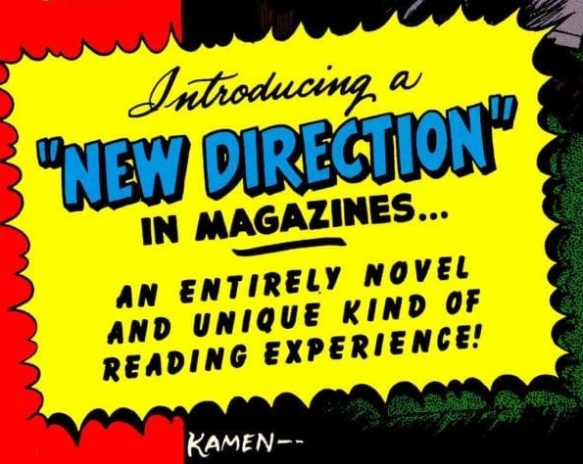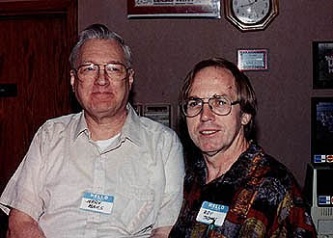Another Monday, another installment of Ghosts‘ new format. This time I’m giving you an overview of the comic landscape in 1950 and a couple fun items from 1960 and 1990. Enjoy!

1950 was a big year for comics. A Senate Subcommittee wrapped up a five-year investigation of organized crime that included examinations of ten comic publishers, but they were unimpressed by Fredric Wertham’s published anecdotes and found inconclusive evidence of a connection (Wertham was invited to testify but declined do to scheduling issues). Amid this public exoneration, New York junior high school teacher Minna Frank published an article in an educators trade magazine describing how she used comics to help remedial readers catch up with their peers.
The industry was booming at $41 million per year. Fifty million comics were being printed each month, with the companies that became Marvel and DC accounting for only 13 million of those. Each copy sold was shared among three or four people. A readership study found that one in three Americans had read a comic in the previous 30 days, and among that population the average consumption was 15 comics per month. Roughly half the readers were male, and roughly half were over 20 years of age (not the same halves).
To satisfy this large and diverse audience, publishers were just about everything. Romance comics, created a couple years earlier by Joe Simon and Jack Kirby, were still the hot ticket item and led the pack with 50 new titles launched in 1950. Westerns were a close second place, and the start of the Korean War in June triggered a revival in the war genre. Superheroes were falling out of fashion, and falling page counts reduced the appeal of multi-genre anthologies. Marvel was experimenting with comics based on popular radio shows like “My Friend Irma” and “Casey, Crime Photographer”.
Amid this chaos of content, EC publisher Bill Gaines and editor Al Feldstein identified some unfulfilled niches and set out to fill them. Under a “New Direction” branding, they crafted some high-quality short horror stories and tested them in the pages of their crime comics. The response was positive, leading them to launch three horror comics in the spring, followed by equally high-quality science fiction comics. Both were hugely successful and many imitators followed. In the fall, another EC editor, Harvey Kurtzman, set new standards for excellence in war comics with his “Two Fisted Tales”.

The atmosphere for comics was much different in 1960. The adult audience was gone. Sales were falling. Comics were seen as childish material meant to be discarded with maturity. Superheroes were being revived while other genres weakened.
And yet, there was one bright spot. It was minor, and really only important with hindsight. It was a fan letter.
Roy Thomas, a college senior who was excited about the return of his boyhood heroes in “Justice League of America”, was curious about the book’s uncredited creators. He wrote to the book’s editor, Julius Schwartz, explaining that he wanted to share his thoughts with the writer. Schwartz forwarded to the letter to Gardner Fox, who had written the issue. In his reply, Fox informed Thomas of a similar fan who had also reached out regarding the JLA. Believing the two boys would have a lot of common, Gardner provided Thomas with Jerry Bails’ mailing address.
Thomas and Bails hit it off and partnered to put out a fanzine called “Alter Ego”. Both went on to have big impacts on the comic industry. It’s possible they would have independently achieved most of the same feats if it hadn’t been for that letter, but I like to think it was one of the most important letters in comic history.

Comic distributors had been engaged in cutthroat competition for almost ten years by 1990, including an episode known to insiders as the “air freight war”. Most readers were oblivious to it, aside from when it impacted product availability and release dates. Distributor catalogs, which began appearing in the late 1980s, were first crafted with retailers in mind. Fans learned about new books through other channels, like the fan press, word of mouth, or finding it on a display rack. That began to change in 1990.
As the two big distributors, Capital City and Diamond, began to realize fans were also browsing their catalogs, they began adding material to compete with one other. It started with creator interviews and commentary on product, but then Capital went and did the most 1990 thing they could do – they packaged “Advance Comics” with an uncut preview sheet of Marvel trading cards. It wasn’t long before “Previews” was also using enhancements to grab attention. Some editions had to be polybagged to keep all the goodies inside until properly purchased. On at least one occasion, “Previews” featured a foil stamped cover. It was a… unique… time.
All this added attention from readers caused one other change as well – Diamond started offering pornographic comics. Previously, the company had declined to stock it on account of owner Steve Geppi’s personal views. A sudden surge in the material’s popularity, coupled with Capital City’s willingness to sell it, led Geppi to reconsider his stance. Thus, it was in 1990 that Diamond introduced the “Previews Adult Supplement”, a happy work-around that allowed the material to be offered without putting it next to Archie and Alf. The supplement is still in use thirty years later, although I have never personally browsed one. I swear.






